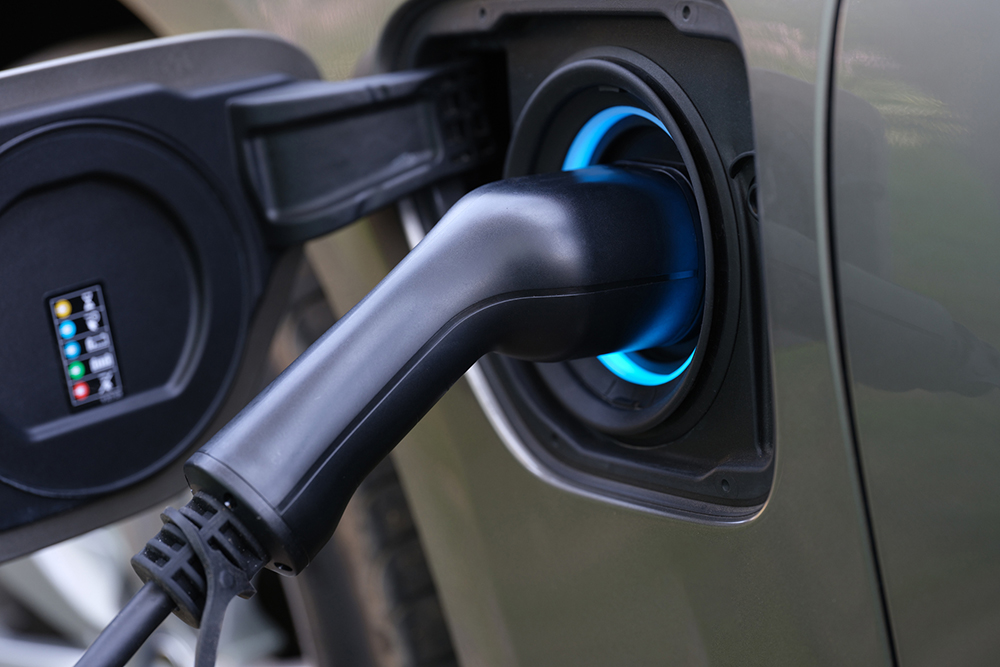
Learn how to take advantage of commercial EV charger installation rebates and incentives. Find guidance about where to find them, general qualification criteria and the types of installation costs generally covered by these programs.
Key takeaways:
- Find a list of the common criteria required to apply
- Discover the advantages of rebate stacking
- Learn the types of charges typically covered and how much money is available
Looking for ways to save on the cost of your commercial EV charger station installations? Numerous EV charger rebate programs are available, offering a valuable pathway to help offset the cost of a new installation. Different government bodies, utilities and municipalities offer programs designed to incentivize the adoption of electric vehicles by encouraging further additions to the EV infrastructure.
Learn to make the most of these opportunities with help from a manufacturer that has taken proactive steps to make the application process more manageable. These rebate offers are frequently issued on a first come/first served basis, so it is important to act fast. Let’s dive into the process and requirements to help you find a rebate that best suits your business location or plans.
What are rebates and incentive programs for EV charging installations?
A commercial EV charging station rebate or incentive program is a government or utility-sponsored initiative designed to encourage businesses, property owners and organizations to install electric vehicle charging stations on their premises. These commercial programs differ in availability and scope from the federal tax credit offered to individual consumers installing a charger in or near their home.
Available commercial incentives can be significant. One rebate for commercial EV charging stations offered by The Los Angeles Department of Water and Power includes up to $125,000 per direct current fast charging (DCFC) station intended for medium- and heavy-duty vehicle use, depending on the location of the EV installation.
In this program, eligible customers can qualify for more than one rebate based on the number of installation sites, the number of parking spaces available at the installation location, the service area and the cap placed on the number of rebates by the issuing body, among other criteria.
How can my business qualify for an EV charger rebate?
There is a list of criteria to check to determine if your company or business is eligible for rebates and incentives. While some rebate programs are specific to a region or locality, in general, the list might look as follows:
- Product eligibility—In many cases, both L2 AC charging stations and DC fast chargers are eligible. Certain programs, however, might require minimum wattage and therefore only apply to the most recent version of a DC fast charger.
- Site eligibility–The installation must be a new build and not a replacement of an existing charging station
- Geographic location–The installation fits within the geographic locale specified by that rebate program
- Licensed business – Operators must have a valid business license.
- Public or private access— Some utilities and municipalities offer rebate programs for private access installations on private property, such as installations or chargers designated for fleet use. Others restrict rebates to installations that offer charging to the general public.
- Program caps—A rebate might be capped at a certain percentage of a project cost, while others have a dollar limit. Depending on the type and extent of the installation, the difference can be significant. Be clear on the caps and eligibility when applying.
What costs are eligible for EV charging station rebates or incentives?
Each rebate program and offer will have different terms for the charging equipment incentive. Most will supply a list or a chart that displays columns of eligible and ineligible installation costs. For example, the land or parking space purchase or lease typically is not eligible for an incentive, nor is the cost of the electricity once the charging station is installed.
Eligible charges are generally related to the equipment, such as the charger, plugs and connectors—some programs even cover freight costs for shipping. Installation incentives often cover the wiring and associated electrical equipment, such as conduits and fittings. As more good news, construction costs and labor, which can comprise a considerable portion of the expenses, are also often eligible for incentive program funding.
Steps to follow to apply for an EV charging station rebate
Ready to take the first step in applying for EV charging infrastructure rebates and programs? Here is a general checklist.
| Know the rules | Begin by understanding the eligibility criteria and regulations of the rebates to determine whether these particular rebates would apply to your situation. Rebate programs might specify property types, business categories, location, or organizational requirements. |
| Calculate your expenses | Calculate the costs associated with your intended installation. Understanding the total cost or creating a financial plan can help you plan your investment strategy. |
| Apply for the rebate | The process typically involves:
|
| Purchase and installation | After your rebate application is approved, proceed to purchase and install the charging station. Adhere to all regulatory requirements during the installation process. Maintain thorough records of your receipts and necessary documentation for future reference. |
| Inspection and final documentation | Arrange for the inspection of your installed charging station by the relevant authority if required by the rebate program. If no issues are found during the inspection, you can submit the final rebate paperwork for verification, leading to the issuance of the rebate. |
While the process may seem straightforward, don’t forget that there will be extra steps depending on your location and the type of EV charger you install. You might need to get permits or install particular electrical work. The good news is that many programs will cover some of these costs.

Can I stack EV charger rebates?
Always look for opportunities to stack rebates when possible because stacking helps you save more. Commercial EV charger installations might have the opportunity to take advantage of more than a single rebate program, depending on eligibility. This practice, commonly called “stacking,” allows a company to harness the full potential of multiple rebate sources for an EV charging station project.
The different organizations that might make rebates or incentives available can include:
- Federal
- State
- Local governments
- Utility companies
- EV manufacturers
Knowing the limits and rules associated with stackable rebates is important because not all programs allow for unlimited stacking. Some programs may have caps on the total rebate amount or specific restrictions on which combinations are permitted.
One way to negotiate this pathway through rebate stacking is to review rebate program documentation meticulously. This supplies an understanding of the terms and conditions of each program to optimize your rebate strategy and make your EV charging station the most cost-effective.

Get to market faster by working with a preapproved vendor
Most alternative fuel rebates or incentive programs work on a first-come/first-serve basis. However, applicants can streamline the process when the EV charging equipment destined for purchase appears on a preapproved vendor list.
Working with a manufacturer that proactively seeks qualification for its equipment on a list of preapproved options eligible for rebate programs offers significant benefits to companies seeking rebates or incentives.
- First, it streamlines the rebate application process by reducing the paperwork
- Secondly, it supplies the assurance that the company’s planned installation would qualify for an incentive without delay
- Third, it enhances cost-effectiveness by providing access to more rebates
Finally, this proactive measure reflects the manufacturer’s commitment to supporting its clients by maximizing their savings and fostering sustainable EV charger infrastructure growth. Preapproval helps speed the process to benefit from the financial advantages supplied by EV charger rebates.
BTC POWER is always on the lookout for rebate and incentive programs that pop up throughout the country. Once identified, our staff files the appropriate paperwork to pre-qualify our EV charging stations, such as our Split System DC Chargers, to help streamline the application process for our customers. Customers can trust that the BTC POWER equipment leverages the industry’s latest technology to deliver dynamic power allocation to fully charge vehicles in less time and with less hassle.
For questions, contact your sales representative. If you need a sales representative, contact us for assistance.

